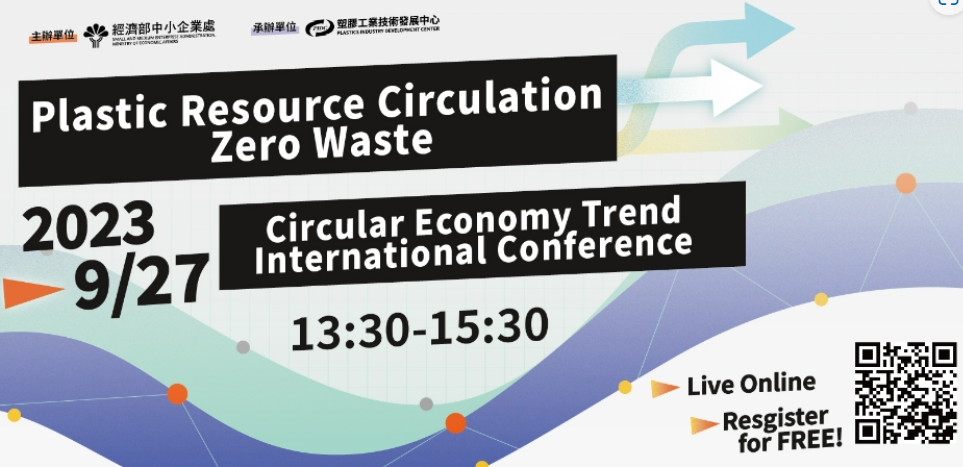Circular Economy Trend International Conference-Plastic Resource Circulation Zero Waste
At the United Nations Environment Assembly (UNEA 5.2) in March 2022, governments of various countries voted to launch a global negotiation meeting on legislation on plastic pollution, with the goal of completing the Global Plastic Treaty by the end of 2024. The negotiation work is a major advancement for the net zero action. However, to move towards "Net-Zero Carbon Emissions", it is necessary to fundamentally change the way products are produced and used , such as reducing the extraction of raw materials and using already mined materials more efficiently. One of the important solutions to achieve net zero emissions is to avoid the waste of a large amount of energy resources and improve the use efficiency of energy resources.
Plastic materials with various characteristics and functions can help us keep food fresh and make vehicles light and energy-saving. But the vast majority of plastics are made from fossil fuels, which generate a lot of carbon emissions during the production process. More than 40% of plastic is used only once and then thrown away, causing a serious global waste problem.
More than 9 million metric tons of plastic flow into the sea every year. Whether it is fishing waste, disposable plastic packaging and supplies, or plastic particles, it seriously affects marine ecology. The characteristics of being difficult to decompose make the problem of marine waste plastic continue to accumulate. According to statistics, at least more than 700 species are seriously endangered. If we do not take any action, the total weight of plastic in the sea will be greater than that of fish in 2050. In addition, according to statistics, only 14% of plastic packaging in the world is recycled every year, and the rest is lost Part of this is equivalent to a loss of US$80-120 billion.
A wide range of uses and characteristics that are difficult to replace make plastics an indispensable material for modern life and industry. We must allow plastics to be efficiently recycled as resources instead of being lost to the environment. Among them, the introduction of waste management and circular economy concepts is crucial. In addition to directly reducing unnecessary use and design, we can also see different recycling opportunities for plastic packaging containers through the business model and product design of circular economy.
In concusion, the resource cycle of plastic materials has indeed been paid more and more attention. Governments of various countries have also stimulated changes in production and consumption thinking patterns through active commitments and actions, in order to help domestic small and medium-sized manufacturing enterprises to better understand the international plastic recycling market. , and its multiple applications as low-carbon materials on the product side.
Time: September 27, 2012 (Wednesday) 13:00 ~15:50
Location: Online, using Moicrosoft teams online software
To register and for more information: https://www.surveycake.com/s/MOGle
*If you have any questions, please call 04-23595900#337 Mr. Lin, Plastic Industry Technology Development Center



